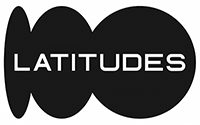Joni Brenner

Joni Brenner is the first artist that has brought a human skull into the studio. It graced the working space with its presence and focused our minds on what is important and what is not. The brains in our skulls were set thinking about the skull on the table, this is reminiscent of the message in Masaccio’s great early Renaissance fresco of the Holy Trinity which includes the inscription: "IO FU[I] G[I]A QUEL CHE VOI S[I]ETE E QUEL CH['] I[O] SONO VO[I] A[N]C[OR] SARETE" (I once was what you are and what I am you also will be).
Brenner was born in Zimbabwe. She has an MA(FA) degree from the University of the Witwatersrand where she is also a lecturer in History of Art at the Wits School of Arts.
Brenner has been practicing professionally as an artist since 1996 and has held solo exhibitions in Johannesburg and London. Her work is in several public and private collections. Brenner’s work is primarily concerned with portraiture but not in the traditional rendering of the physical likeness of an individual. Her work investigates commemoration, life and death and her technique bridges abstraction and realism.
"These lithographs show three different views of a skull. The term ‘articulated’, in relation to a skeleton, indicates that all the bones have been hinged together in the same relative position to each other, as they were when the person was alive—the individual parts made coherent. More generally articulated refers to something clearly defined, or to something said very clearly, so that each word or syllable can be heard.
In these works, fluid broad areas are overlaid with tighter more prominent defining marks to articulate the form, capturing the complex range of solid and intricate sections that make up the skull.
My skull work, since 2012 —mostly rendered in watercolour, but also in clay, bronze and oils—has revisited the same particular skull over and again in a repetitive practice of close looking and re-looking. This focused practice amounts to a meditation on life and living, its transience and fragility, on presence and absence, rather than on a skull as a symbol of danger or anything ghoulish." Joni Brenner, 2017
Read More






